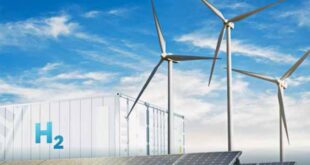For a commodity going through one of its worst slumps ever. you would think that a major oil company bringing more of it to an already flooded market would cause all manner of panic.
At a production clip of 10.3 million b d of oil. Saudi Aramco is by far the world’s biggest energy company. responsible for single-handedly pumping 10% of the world’s crude supply–at some of the lowest production costs.
That’s why news that Saudi Arabia–a nation well known for its energy price wars–has just launched the biggest shale gas development outside of the United States should be unsettling for the severely depressed natural gas market.
Only. it’s not.
Understandably. the markets are feeling jaded with natural gas prices slumping nearly 40% over the past year. It’s probably one reason why the specter of another supply glut has only elicited muted reaction.
But there’s more to it than meets the eye.
Major Gas Producer
Saudi Aramco has announced that it will be pumping $110 billion over the next couple of years to develop the Jafurah gas field. which is estimated to hold 200 trillion cubic feet of gas.
The state-owned company hopes to start natural gas production from Jafurah in 2024 and reach 2.2 Bcf d of sales gas by 2036 with an associated 425 million cubic feet per day of ethane. The field will produce some 550.000 barrels per day of gas liquids and condensates. around 50% more than current output of just over 1 million bpd. For perspective. Aramco produced 8.9 Bcf d of natural gas and 1 Bcf d of ethane in 2018.
If the company hits its development targets for the field. Jafurah will become the largest unconventional gas field outside the U.S.. while Saudi Arabia will officially become the world’s third largest gas producer by 2030. behind only Russia and the U.S.
Unconventional drilling has not been very successful outside North America. mostly due to lack of expertise. scarcity of water or other key resources. poor infrastructure or proximity to large population centers.
But Aramco appears to have it all figured out. and has even boasted about its low shale gas development costs.
As Amin H. Nasser. president and CEO of Saudi Aramco. has revealed. Jafurah will use plentiful seawater in the fracking process. easing a major worry for the mostly desert nation.
The Saudi state oil group has also worked with international oil service companies including U.S.- based shale drilling experts Schlumberger. Halliburton Co. and Baker Hughes Co. on the field to develop the necessary fracking technology. The company has already drilled 150 wells since 2013 so it has probably tested all production parameters.
Not for Export
All that sounds impressive. but it probably won’t be enough for Saudi Arabia to become a major exporter of natural gas–still.
`Soon you will hear about the ability of the kingdom to be a gas exporter.` Saudi Arabia’s Crown Prince Mohammed bin Salman said earlier this month. without offering any further details.
That’s easier said than done.
In the same breath. bin Salman issued an order on Friday for Jafurah’s gas to be used primarily by domestic industries such as petrochemicals to support the kingdom’s Vision 2030 development plan. the prince’s chief economic reform strategy to diversify away from over-dependence on oil.
Aramco has committed billions of dollars to new petrochemical projects. including a US$44-billion refinery and petrochemical complex in India and a US$7-billion investment in another complex in Malaysia. and is in negotiations with companies for more partnerships in this segment.
Further. Saudi has been having strained relations with Qatar–its major natural gas supplier via the Dolphin pipeline–since 2017 after accusing Doha of supporting terrorism. Saudi Arabia would be keen to minimize its reliance on Qatar by developing its own gas fields.
But keeping its own natural gas also makes plenty of economic sense. The kingdom has been burning though nearly 900.000 b d of valuable liquid fuels for industrial use and power generation. Replacing all that oil natural gas could generate more than $10 billion in additional export revenues and possibly significantly more if oil prices recover in the future. That extra oil could also provide a nice cushion to spare its crude capacity that was recently tested by the Abqaiq attacks.
Saudi Arabia is not likely to be in a position to export natural gas any time soon even if it wanted to.
Global energy analyst Platts Analytics has estimated that Saudi Arabia’s natural gas production needs to reach at least 23 Bcf d by 2026 to fully meet the nation’s growing power and industrial demand. This means that natural gas alone will barely be able to meet half the industrial demand even with Jafurah at full blast.
Assuming Saudi Arabia is able to export an extra one million b d of oil by replacing some its own demand with natural gas. there still won’t be much to worry about. In its latest estimates. the EIA expects that global petroleum and liquid fuels demand will rise by 1.0 million b d in 2020. and another by 1.5 million b d in 2021.
Any more of the black commodity in this oversupplied market is bad. but it probably won’t matter much in the bigger scheme of things.
 Iran Energy News Oil, Gas, Petrochemical and Energy Field Specialized Channel
Iran Energy News Oil, Gas, Petrochemical and Energy Field Specialized Channel



